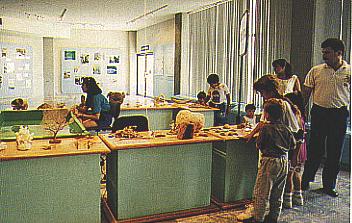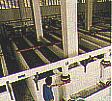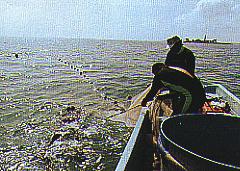 As an invaluable
teaching center, the Museum is an area of never ending change offering
dynamic training and education.
As an invaluable
teaching center, the Museum is an area of never ending change offering
dynamic training and education.
With temporary and permanent exhibits relating to aquatic life, the Museum carries the name of Ramon Bravo, internationally known mexican marine photographer and researcher who died not long ago.
 As an invaluable
teaching center, the Museum is an area of never ending change offering
dynamic training and education.
As an invaluable
teaching center, the Museum is an area of never ending change offering
dynamic training and education.
It allows the visitor's active participation in the analysis of unfolding
information. It offers interesting exhibits concerning the sea as an endless
source of products used in our everyday lives and unique teaching experiences
such as the hands on area, where the public can freely examine the small
marvels such as snails, shellfish, sponges, shark jaw bones and teeth,
starfish, sea urchins,, turtle shells, crabs, coral and much more.
Behind the Aquarium
In this gallery, a large collection of photographs show the work going
on behind the scenes in the Aquarium, this work is indispensable in the
daily running of the facilities and in the life of the species, of course.

Filtering system

Handling of specimens |
The capture of specimens is a delicate undertaking in which local fishermen work together with technical personnel. Before making its appearance in public, a fish passes through a process of observation and adaptation in one of the quarantine areas or in enclosures near Isla de Sacrificios (Sacrifice Island), which allow the gradual adjustment of the larger species. Fish is kept free of injure, disease, deparisitized, injected with vitamin B to stimulate appetite and given oxygen if needed to help the breathe. Diet is very important, mineral supplements and even vegetables have to be given for the herbivores species. |

Capture in Gulf waters next to Aquarium
Feeding the turtles |
Artemia sp.
With the most advanced technology, the Veracruz Aquarium Research Center has an extensive technical area made up of sections caring for the maintenance of each of the galleries, workshops and the two fully equipped laboratories.
The Chemistry Laboratory is responsible for the system's hygienic control necessary for the well being of the specimens and for reproduction as close as possible to their natural environment.
The Living Food Laboratory carries out one of the most delicate and laborious tasks of the Aquarium, the production of artemia sp., small organisms which for part of plankton, the first link in the marine food chain, rich in nutrients and an unique source of vitality and color for many of the Aquarium species.